Rain-splattered trails and the scent of wet earth may seem daunting to any hiking enthusiast. I know, because like you, I had my reservations about braving the wilderness under a cloudy sky.
But after several damp escapades and rigorous research into the techniques adopted by seasoned hikers, I’ve gathered 17 hot-off-the-trail tips for successful hikes in the pouring rain.
Keep scrolling to uncover your ultimate guide on turning what could be a soaked experience into an exhilarating triumph over nature!
Key Takeaways
- Check the weather forecast before going on a rainy hike, and choose the right gear and clothing to stay dry and comfortable.
- Be cautious of wet trail hazards such as slippery paths and fast-moving water, and consider choosing a covered trail or familiar hike for extra protection from the rain.
- Pack essential items like waterproof bags, rainproof gear, waterproof backpack covers, and moistureproof storage to keep your belongings dry. Share your hiking plans with others for safety purposes.
- Be prepared for changing weather and thunderstorms by checking updates throughout the hike. Afterward, make sure to properly dry out your gear to prevent damage.
Guide to Hiking in Rainy Weather
Hiking in wet weather is fun, but it needs careful planning. You must get the right clothes to stay dry and comfy. Layer your clothing and use waterproof gear. This will help you feel warm even when the rain falls.
Check the forecast before going on a rainy hike. Weather can change fast, so being ready is key. Look for hiking trails that are good for rainy days. Some paths work well with rain while others do not.
So pick your trail wisely!
Tips for Hiking in the Rain
Check the weather forecast, choose the right gear and clothing, pack essential items to keep dry, be cautious of wet trail hazards, consider a covered trail or familiar hike, stay aware of terrain conditions, pack portable snacks and drinks, share your hiking plans with others, be prepared for changing weather and thunderstorms, and make sure to dry out your gear after the hike.
Check the weather forecast
Always know the weather before you hit the trails. This tip is a must for safe hiking in rain. You can use your phone or computer to find out what’s happening with the weather. Look at the forecast for today and tomorrow.
I like to monitor weather patterns of past days, too. It gives me an idea of what might happen.
Sometimes, I pick October for my hikes in Tatra Mountains near Zakopane. There are fewer rainy days then and less cloud cover too! But even if it does rain, don’t worry! Hiking in rain becomes fun when we take care and prepare well.
Choose the right gear and clothing
Choosing the right gear and clothing is key when you hike in the rain. Here is a list of items that can help:
- A rain jacket is a must. It will keep your upper body dry.
- Rain pants are also useful. They stop your legs from getting wet.
- Waterproof boots keep your feet dry and cozy.
- A waterproof backpack keeps all your things safe.
- If you have a hat for the rain, it can shield your face.
- Waterproof gloves will protect your hands from cold and dampness.
- Also, don’t forget about socks that resist water.
Pack essential items to keep dry
When hiking in rainy weather, it’s important to pack essential items that will help keep you dry. Here are some things to include in your backpack:
- Waterproof Bags: Use these to store important items like electronics, maps, and snacks.
- Rainproof Gear: Invest in a good rain jacket and pants to keep yourself dry from the elements.
- Waterproof Backpack Covers: These covers will protect the contents of your backpack from getting wet.
- Moistureproof Storage: Use ziplock bags or waterproof containers for items that need extra protection.
- Water-Resistant Materials: Choose gear and clothing made from materials that repel water.
- Rain Protection Gear: Carry an umbrella or a waterproof hat to shield yourself from the rain.
- Waterproof Clothing: Pack an extra set of clothes in case yours get soaked during the hike.
- Rainproof Storage Solutions: Use dry sacks or stuff sacks to organize and protect your gear inside your backpack.
Be cautious of wet trail hazards
When hiking in the rain, it’s important to be careful of wet trail hazards. The trails can become slippery and muddy, making it easy to slip and fall. You should watch your footing and take each step with caution.
Heavy rain can also lead to flash floods and fast-moving water on the trails, which can be dangerous to cross. It’s best to avoid crossing swollen creeks or rivers during a rainy hike.
Additionally, stay away from tall objects like trees, boulders, and power poles as they may attract lightning during a storm. Metal objects should also be left behind temporarily to prevent any potential hazards.

Consider a covered trail or familiar hike
When hiking in rainy weather, it’s a good idea to consider choosing a covered trail or a familiar hike. This can provide you with some extra protection from the rain and make the experience more enjoyable.
Look for trails that have overhead coverage, such as dense tree canopies or rocky overhangs, which can provide some shelter from the rain. Alternatively, opt for a hike that you are already familiar with.
Familiar hikes give you confidence and allow you to focus on enjoying the scenery rather than worrying about getting lost. So, when planning your rainy day hike, think about selecting a covered trail or a hike that you know well to make the most of your outdoor adventure.
Stay aware of terrain conditions
When hiking in rainy weather, it’s essential to stay aware of the terrain conditions. This means choosing a trail that is suitable for wet weather and considering the landscape before heading out.
Be cautious of any dangerous or slippery sections along the trail and avoid walking on icy areas. By being mindful of the terrain conditions, you can have a safer and more enjoyable hiking experience even in rainy weather.
Keep these tips in mind to ensure your hike is as safe as possible!
Pack portable snacks and drinks
When hiking in rainy weather, it’s important to pack portable snacks and drinks to keep you nourished and hydrated throughout the hike. Choose lightweight options that are easy to carry, like energy bars and trail mix.
Don’t forget to bring water bottles or other convenient drink options as well. It’s a good idea to pack enough snacks and drinks to last the duration of your hike, so you won’t have to worry about running out along the way.
Stay prepared with these portable food and hydration choices for a successful rainy hike!
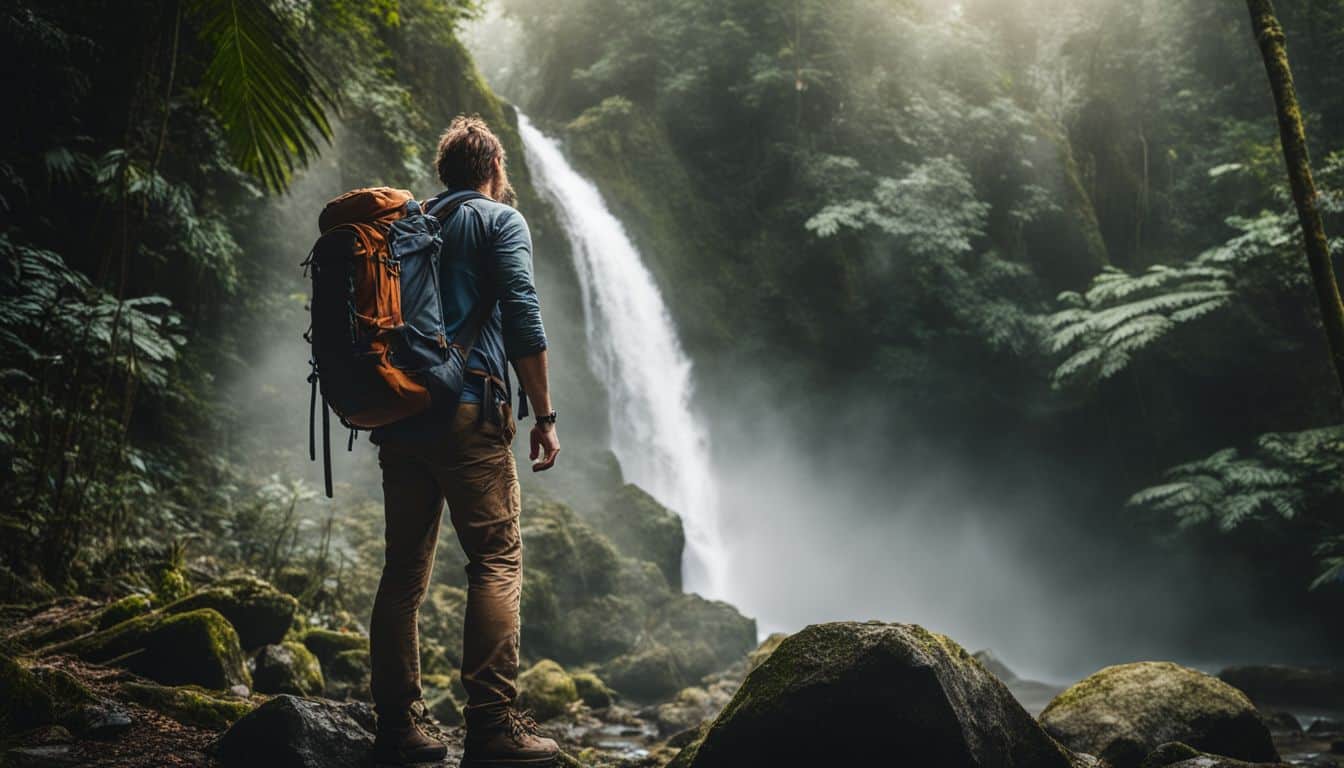
Share your hiking plans with others
It’s important to share your hiking plans with others, especially when you’re planning to hike in rainy weather. This helps ensure your safety and the safety of others. By letting someone know where you’ll be and when you expect to return, they can check on you if you don’t come back on time.
If an emergency arises, having someone who knows your plans can help rescue teams find you faster. So before heading out for a rainy hike, make sure to share your plans with a trusted friend or family member.
Be prepared for changing weather and thunderstorms
Being prepared for changing weather and thunderstorms is essential when hiking in rainy conditions. As a hiker, I always make sure to check the weather forecast before heading out on my adventure.
This helps me anticipate any potential storms or inclement weather that may be headed my way. Additionally, I pack waterproof gear such as a rain jacket and pants to keep myself dry during sudden downpours.
It’s important to stay updated with weather forecast updates throughout the hike so that I can take necessary precautions if there is a thunderstorm approaching. By being prepared for changing weather and thunderstorms, I can ensure my safety while enjoying the beauty of nature even in stormy conditions.
Dry out your gear after the hike
After a rainy hike, it’s really important to dry out your gear properly. This helps to protect your belongings and keeps them from getting wet again. Plus, it’s much easier to stay dry in the first place than trying to dry everything out afterwards.
So, when you’re hiking in the rain, make sure you only open your pack and take off wet clothing if you’re under tree cover or rock overhangs for protection. This way, you can keep your gear as dry as possible during the hike and avoid any unnecessary moisture getting inside.
Remember to take extra care of your gear after the trip by drying it thoroughly before storing it away.
Benefits of Hiking in the Rain
Hiking in the rain has its own unique benefits. First, it allows you to experience nature in a different and beautiful way. The rain makes everything look more vibrant and alive, enhancing the scenic beauty of the surroundings.
It can be a peaceful and calming experience too, as there are usually fewer people on the trails during rainy weather.
Secondly, hiking in the rain can be a great way to improve your physical fitness. Walking on wet and slippery trails requires more effort and balance, giving you an extra challenge for your outdoor exercise routine.
Lastly, hiking in the rain can teach you valuable skills. You learn how to navigate through changing weather conditions and adapt to unexpected situations. These skills can come in handy not just for future hikes but also for other outdoor activities.
So don’t let a little rainfall discourage you from going out on a hike! Embrace the benefits that come with hiking in the rain and enjoy all that nature has to offer even when it’s wet outside.
When to Cancel or Postpone Your Hiking Trip
If the weather conditions are severe or dangerous, it’s important to cancel or postpone your hiking trip. Safety should always come first. If there is heavy rain, strong winds, lightning storms, or flash flood warnings in the area where you plan to hike, it’s best to wait for better conditions.
Hiking in these kinds of weather can be risky and increase the chances of accidents or getting lost. Keep an eye on the weather forecast before your trip and be prepared to adjust your plans accordingly.
It’s always better to be safe than sorry when it comes to outdoor activities like hiking.
Remember that even if the forecast predicts light rain, certain situations might still require a cancellation or postponement. For example, if there are steep and slippery trails that could become hazardous when wet, it’s best not to take any chances.
Additionally, if you’re planning a hike with others and some members of the group are inexperienced or uncomfortable with hiking in rainy conditions, it might be better to reschedule for everyone’s comfort and enjoyment.
Overall, use common sense judgment and prioritize safety over sticking strictly to your original plans. The mountains will always be there waiting for you when the weather improves!
Best Trails to Hike in a Rainstorm
When it comes to hiking in a rainstorm, it’s important to choose the right trails. Here are some great options:
- Forest trails: These trails usually have more tree cover, which can provide some protection from the rain.
- Trails with good visibility: Look for trails that offer clear sightlines, so you can still enjoy the beauty of nature even in rainy weather.
- Shorter and easier trails: Opt for shorter and easier hikes when it’s raining. This way, you can finish your hike quickly if the weather gets worse.
- Well-maintained trails: Stick to trails that are well-maintained and have good drainage systems. This can help prevent muddy or flooded conditions.
- Trails with natural shelters: Look for trails with overhanging rocks or caves where you can take shelter during heavy rain.
Safety Precautions for Hiking in Rainy Weather
Stay safe during your rainy hike by following these important precautions.
Lightning safety
During a thunderstorm, lightning can be very dangerous. It’s important to take precautions to keep yourself safe while hiking in rainy weather. Remember that being wet from rain is actually safer than being dry and exposed to lightning.
Avoid tall objects, high ground, standing water, metal objects, and open spaces during a thunderstorm to reduce the risk of being struck by lightning. And remember not to use corded phones during a thunderstorm because lightning can travel through metal wires or bars in concrete walls or flooring.
Stay safe!
Creek and river crossing safety
Creek and river crossings can be risky when hiking, especially in rainy weather. It’s important to take extra caution and watch your step around steep drainages and hillsides. To maintain balance and stability, using hiking poles can be very helpful.
When crossing in slippery conditions, it’s crucial to observe your surroundings carefully and proceed with caution. There are 12 safety tips available for crossing rivers and streams that can help prevent accidents and ensure your survival.
River crossings should always be done with an abundance of caution and careful observation.
Wet trail safety
When hiking in rainy weather, it’s important to be cautious of the trail conditions for your safety. Wet trails can become slippery and increase the risk of injury. It’s essential to watch your step and take extra care when navigating through muddy or slick surfaces.
Be aware of any potential hazards such as fallen branches, loose rocks, or unstable terrain that may be hidden by the rain. By being mindful of these hazards and taking precautions, you can minimize the risks associated with hiking on wet trails.
Additionally, it’s crucial to wear appropriate footwear with good traction to help prevent slips and falls. Consider investing in waterproof boots or shoes that will keep your feet dry during the hike.
Wet feet not only lead to discomfort but also increase the likelihood of developing foot problems such as blisters or fungal infections. So make sure to choose footwear that provides adequate protection against moisture.
How to Stay Comfortable and Enjoyable During a Rainy Hike
Choose the right clothing for your rainy hike, including waterproof jackets and pants, to stay dry and comfortable throughout your adventure.
Choosing the right clothing
When hiking in rainy weather, it is important to choose the right clothing to stay comfortable and dry. Here are some tips for selecting the appropriate attire:
- Wear a waterproof rain jacket: A waterproof jacket will protect you from getting wet in the rain.
- Layer your clothing: Layering allows you to easily adjust according to the weather conditions. Start with a moisture-wicking base layer, add insulating layers if it’s cold, and top it off with a waterproof outer layer.
- Choose breathable fabrics: Opt for clothing made from breathable materials that allow sweat to escape, preventing you from getting clammy and uncomfortable.
- Select weather-appropriate socks: Depending on the conditions, choose either thicker or thinner socks to keep your feet warm and dry.
- Use a moisture management system: Consider using moisture-wicking liners or gaiters to help manage sweat and keep your legs and feet dry.
- Protect dampened clothing: Pack extra clothes in a dry bag so you always have something dry to change into if your current clothes get wet.
Using a waterproof jacket and pants
When hiking in rainy weather, one of the most important things to have is a waterproof jacket and pants. They will keep you dry and comfortable throughout your hike. Here’s why they are essential:
- Waterproof outerwear: A good rain gear should provide both waterproof protection and breathability to prevent sweating.
- Rain-resistant clothing: Look for moisture-wicking fabric that helps to keep you dry from both external rain and internal sweat.
- Breathable rain gear: It’s important that your jacket and pants allow air circulation, so you don’t feel clammy inside.
- Moisture-wicking fabric: This type of fabric pulls moisture away from your skin, keeping you dry and reducing the chance of discomfort or chafing.
- Insulated waterproof jacket: Consider a jacket with synthetic insulation as it retains its insulating ability even when wet.
- Rain protection: With a waterproof jacket and pants, you can stay protected from the rain, no matter how heavy it gets.
- Rainproof clothing: Make sure your gear is truly rainproof so that water doesn’t seep through during your hike.
- Waterproof hiking gear: Investing in high-quality waterproof and windproof jackets will help keep you warm and protect against wind-chill during a rainy hike.
- Weatherproof outerwear: Having weatherproof outerwear ensures that you can enjoy hiking without worrying about getting soaked.
Waterproofing your essentials
When hiking in rainy weather, it’s important to keep your essentials dry. Here are some tips on waterproofing your gear:
- Invest in a quality waterproof backpack or bag to protect your belongings.
- Use Ziploc bags or dry sacks to keep items like electronics, maps, and snacks dry.
- Apply waterproof wax or spray to your boots before each season to maintain their water resistance.
- Use a waterproof cover for your sleeping bag to protect it from getting wet.
- Pack extra plastic bags or garbage bags to use as makeshift rain covers for items that don’t have their own protection.
- Consider using a waterproof phone case or keeping your phone in a sealed plastic bag.
- Bring a small towel or microfiber cloth to wipe off any moisture that may get on your gear.
- Keep an extra set of clothes in a waterproof bag, so you have something dry to change into if needed.
Utilizing hiking poles for stability
Hiking poles can be a great tool for stability during a rainy hike. They are also known as walking sticks, hiking staffs, or trekking sticks. These outdoor stability aids can help prevent swelling and promote better circulation in your legs while you hike.
By using the pumping action with your arms, you improve blood flow and reduce the risk of cramps or discomfort. Hiking poles also provide balance and stability on slippery terrain, reducing the chance of falls or injuries.
So when you’re heading out for a rainy hike, don’t forget to bring your trusty hiking poles to enhance your safety and enjoyment on the trail!
Packing extra clothes and towels
When hiking in rainy weather, it’s important to be prepared by packing extra clothes and towels. Having an extra set of dry clothes can make a huge difference in staying comfortable during your hike.
Wool, nylon, and polyester are great choices for outdoor clothing because they wick away moisture and dry quickly. It’s also helpful to have an extra pair of wool socks to change into if your feet get wet.
Packing a small microfiber towel is a smart idea too, as it can be used to dry off your feet or wipe down any wet surfaces at your campsite. By bringing these extra items, you’ll be ready for whatever the rainy hike throws at you and stay comfortable throughout the journey!
Backpacking Specific Advice for Rainy Weather
Keep your sleeping gear dry by using waterproof stuff sacks and storing them in a separate waterproof compartment of your backpack.
Keeping your sleeping gear dry
To keep my sleeping gear dry while backpacking in the rain, I make sure to bring extra clothing specifically for sleeping. Having dry sleep clothes helps keep me warm and comfortable in my sleeping bag.
I recommend packing sleep clothes or socks in a plastic bag or trash bag to prevent them from getting wet and wetting the sleeping bag. It’s also important to separate my sleeping clothes from other items in a waterproof backpack to ensure they stay dry throughout the hike.
Taking care of my gear and making sure it stays dry is crucial for a successful backpacking trip in rainy weather.
Selecting a safe campsite
When hiking in rainy weather, it’s important to choose a safe campsite. Look for higher ground to reduce condensation inside your tent and avoid potential flooding. This will help keep you dry and comfortable throughout your camping experience.
Remember to consider the terrain and find a spot that is flat and away from any hazards like tree branches or loose rocks. By selecting a safe campsite, you can enjoy your backpacking trip even in wet weather.
Using a tarp for shelter
When hiking in rainy weather, it is important to have a way to protect yourself from the elements. Using a tarp for shelter is a great option. A tarp can be used as an alternative to a rainfly if yours gets damaged or you don’t have one.
You can even use it with your hammock to create a cozy shelter. To set up your tarp, wrap the roof line around a tree to make it more stable in windy conditions. A well-pitched tarp will keep you dry and protected from the rain and other elements while backpacking in rainy weather.
Airing out your gear
After hiking or backpacking in rainy weather, it’s crucial to air out your gear to keep it dry and prevent moisture buildup. This helps to avoid mold and mildew from forming, which can damage your equipment.
As soon as possible, hang up your wet gear in a well-ventilated area so that it can dry thoroughly. By doing this, you’ll also be able to eliminate any unpleasant odors caused by the moisture.
Taking the time to properly dry out your gear will ensure that it stays in good condition for future outdoor adventures.
Other Outdoor Activities for Rainy Weather
In addition to hiking, there are plenty of other outdoor activities you can enjoy in rainy weather. You can explore indoor hiking trails or use a treadmill for a challenging workout.
Nature centers and museums are also great options for learning and exploring during wet conditions. If you’re feeling adventurous, try out alternative water-based activities such as kayaking or paddleboarding in the rain for a unique and exciting experience.
Indoor hiking trails or treadmills
If the weather isn’t cooperating and you still want to go hiking, indoor hiking trails or treadmills are a great option. These alternatives provide a controlled environment where you can enjoy the benefits of hiking without getting wet.
Indoor hiking trails offer paths that simulate outdoor conditions, allowing you to experience different terrains and landscapes. On the other hand, treadmills can be set to incline or decline, simulating uphill or downhill hikes.
Both options provide a similar workout to outdoor hiking while keeping you dry. This is especially convenient for those who live in areas with frequent rain or bad weather. So don’t let rainy days stop your love for hiking – try out indoor hiking trails or treadmills instead!
Exploring nature centers or museums
I love exploring nature centers and museums, especially when the weather is rainy. It’s a great way to continue my outdoor education and learn more about the natural world. These places offer interactive exhibits, displays, and programs that engage visitors of all ages.
Whether it’s wildlife exhibits, conservation centers, or science museums, there are always plenty of educational workshops and expert-led presentations to participate in. Some nature centers even have indoor hiking trails or nature-themed play areas! So even if I can’t go on a hike outdoors, I can still immerse myself in nature-themed activities and have a fun-filled day of learning and exploration at these venues.
Trying out alternative water-based activities
If the weather is too rainy for hiking, there are still plenty of fun outdoor activities you can try. Why not give water-based activities a go? You could go kayaking or canoeing in a nearby river or lake.
If you’re feeling adventurous, how about trying scuba diving? It’s a great way to explore underwater even on a rainy day. And if those options don’t appeal to you, consider trying out BMX biking or skateboarding at an indoor park.
Rainy days shouldn’t stop you from enjoying the outdoors – just find some alternative water-based activities and have fun!
Conclusion on Hiking In Rainy Weather
Hiking in rainy weather can be challenging, but with the right tips and gear, it can also be a rewarding adventure. By checking the weather forecast, choosing the right clothing and equipment, and being cautious of wet trail hazards, you can stay warm and dry during your hike.
Remember to share your plans with others and be prepared for changing weather conditions. With these top tips, you’ll be well-equipped to achieve success on your next rainy hike!
FAQs on Hiking In Rainy Weather
1. Is it safe to go hiking in rainy weather?
Hiking in rainy weather can be safe as long as you take necessary precautions and plan accordingly.
2. What should I wear for hiking in rainy weather?
Wear waterproof or water-resistant clothing, including a rain jacket, pants, and waterproof hiking boots to keep yourself dry.
3. How do I protect my backpack and gear from getting wet during a rainy hike?
Use a waterproof cover for your backpack or line it with a garbage bag to keep your gear dry. Pack important items in sealed plastic bags.
4. Should I bring any extra supplies for hiking in the rain?
It is recommended to bring additional items like extra layers of clothing, a towel or microfiber cloth for drying off, and waterproof storage bags for electronics or sensitive items.
5. What are some safety tips while hiking in the rain?
Stay aware of changing weather conditions, watch out for slippery surfaces, avoid lightning-prone areas, and let someone know about your hiking plans before heading out.

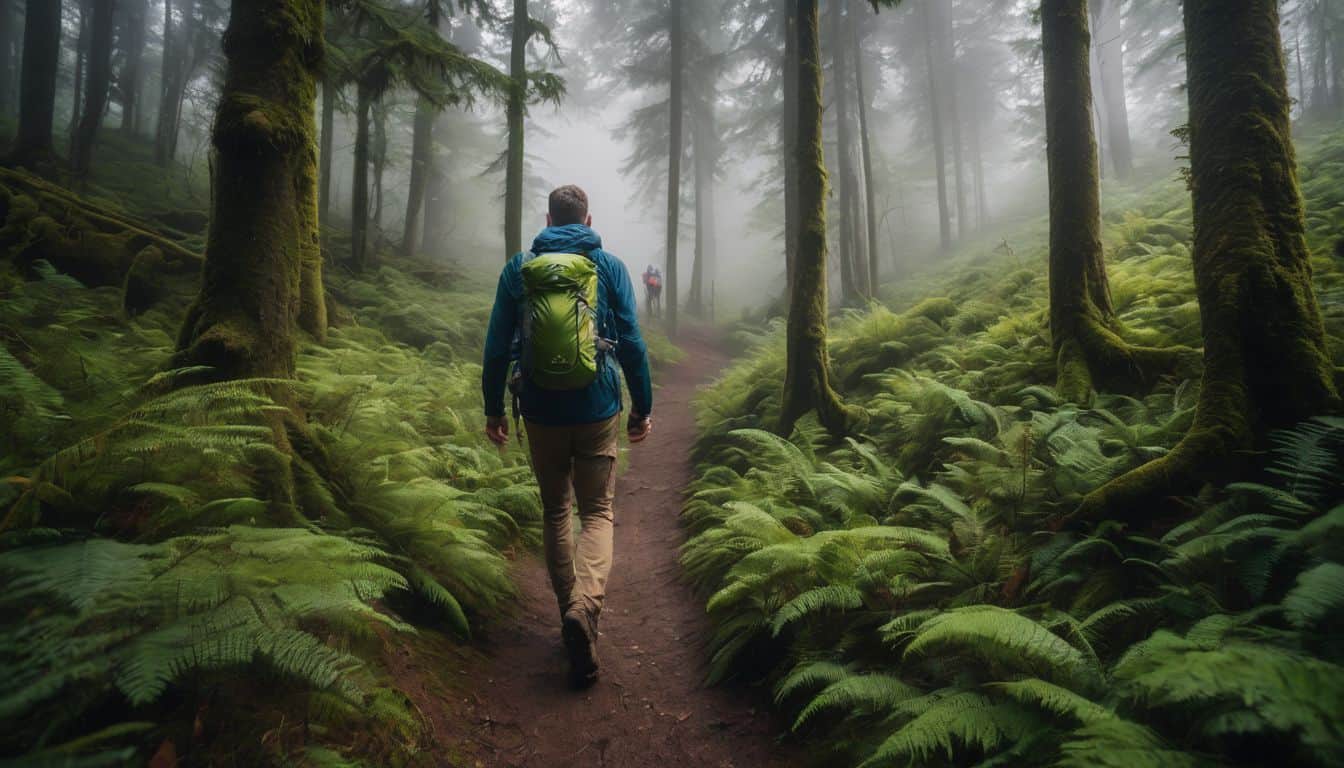
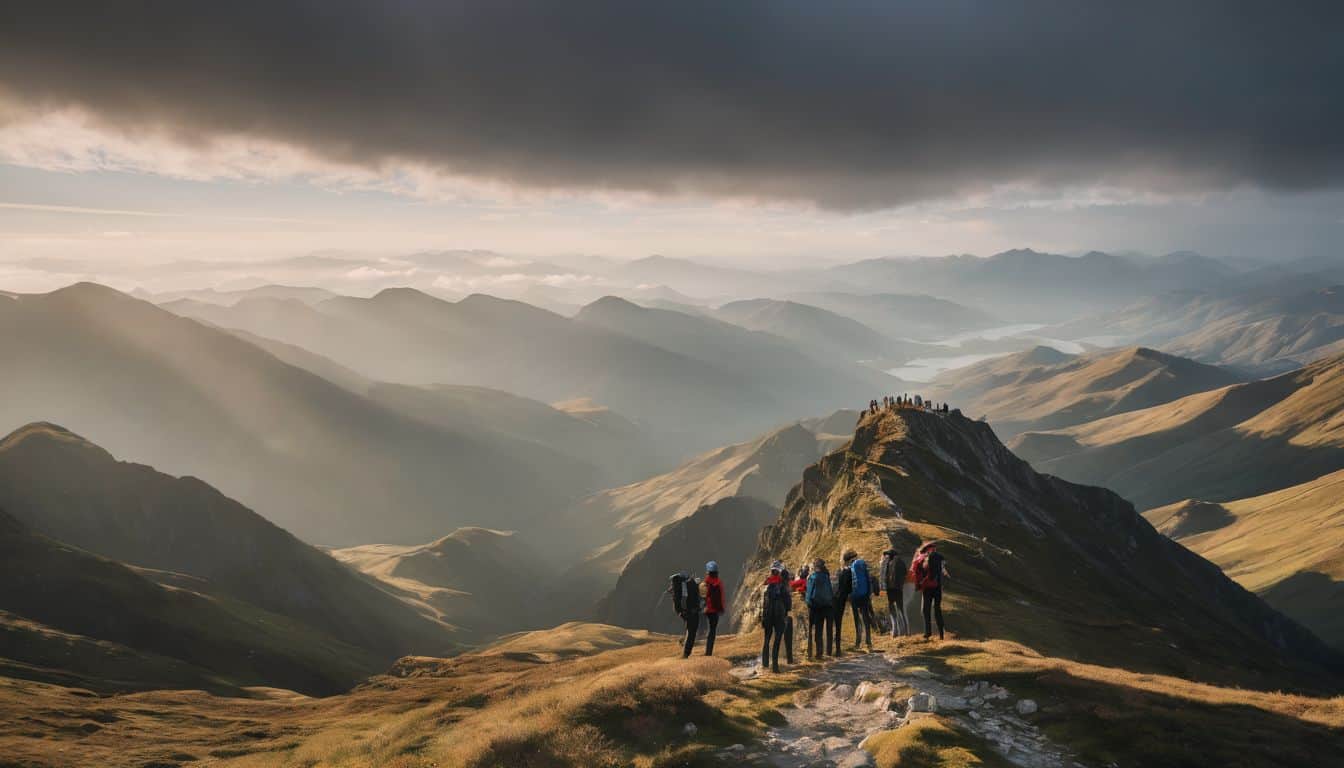
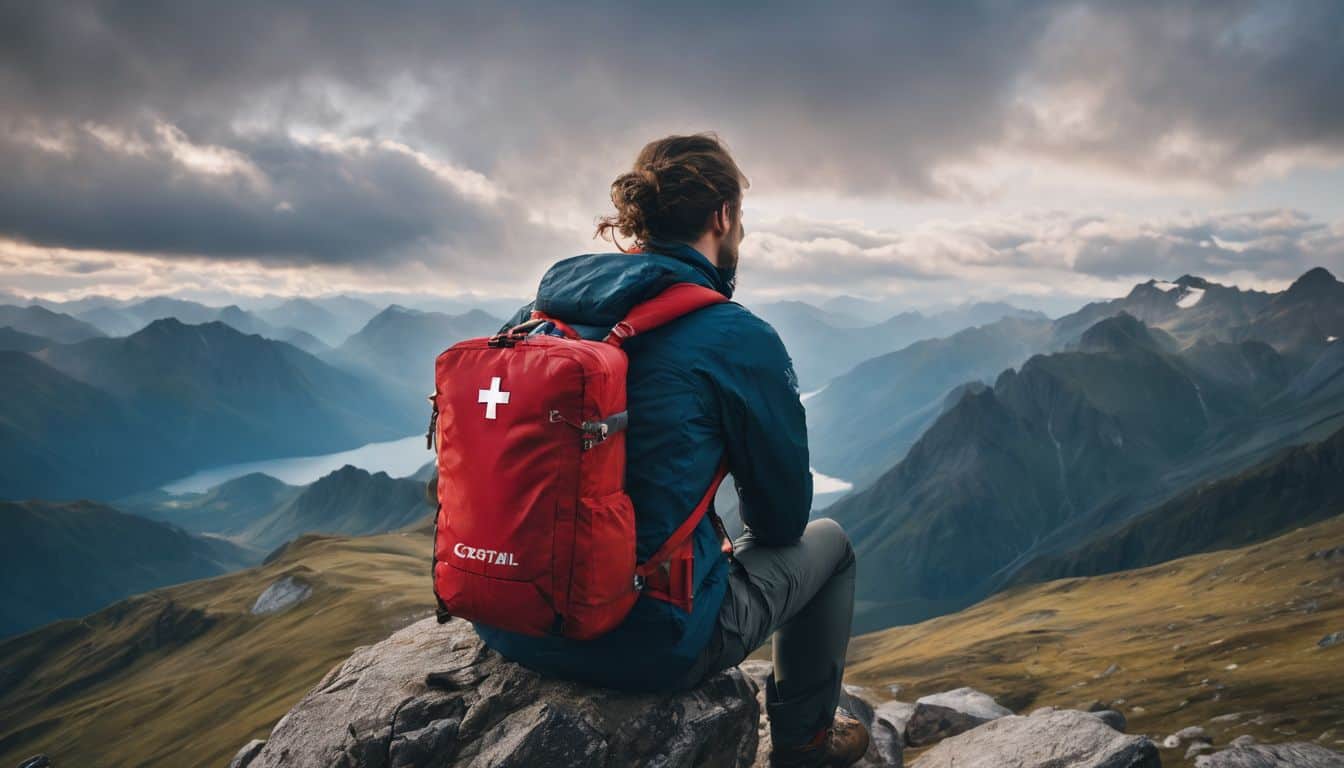
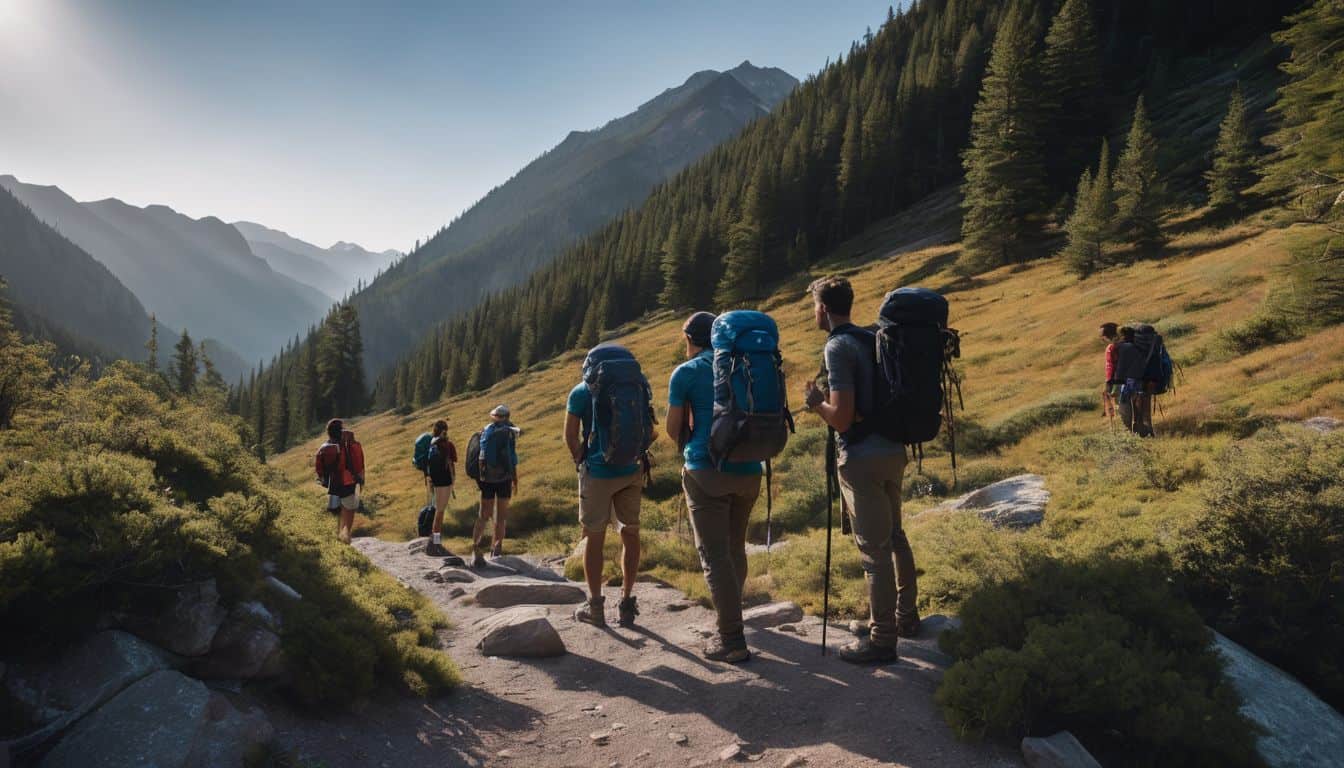
Leave a Reply